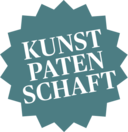Haube: Helmhaube/Innenfutter für einen Stechhelm
Ende 15.-Anfang 16. Jahrhundert, Owner: Sigmund Sohn d. Friedrich IV. von Habsburg
Helmhaube/Innenfutter für einen Stechhelm
In a joust of peace (see invs. S VIII, B 87), the most dangerous piece of equipment worn by the two mounted combatants were their own helmets. If a jouster’s head hit the inside wall of his steel helmet – caused either by the impact of his opponent’s lance or his subsequent fall from his horse – he might easily suffer a concussion or serious injury. In order to prevent this, knights wore thick, padded linen hoods under their helmets. Most of these balaclava-like hoods were filled with hemp and were firmly tied to the steel helmet with leather straps to ensure the distance between head and helmet remained constant. Steel helmets had special holes through which the straps were passed to be tied on the outside.
On the battlefield, a mounted knight had to be able to put on and take off his steel helmet quickly and without assistance, which means it would have been highly impractical to lash his head, encased in a linen ‘balaclava’, to his helmet. In the lists, however, safety was paramount, and there was plenty of time for a helper to ensure the steel helmet fitted perfectly and to tie the knight’s linen hood to it.
Only very few contemporary sources have survived that tell us about this practical detail of jousting. In his Collectanea (1509), Pietro Monte, for instance, advised his readers to protect their heads with padding lashed to their helmets with two straps, one from the front and one from the back. A layer of wax, too, apparently helped reduce the impact of a hit.
Eight padded linen hoods have survived in the Imperial Armoury, all of them constructed differently. Today, late medieval and Renaissance linen hoods are extremely rare. At the time they had little value, and once they were soaked with sweat and torn or ripped, they were simply discarded. In addition, the hoods stored in armouries were threatened by humidity, mice, and other vermin, which over time reduced their numbers further.
Object data
Object Name
Haube
Culture
Innsbruck
Dated
Ende 15.-Anfang 16. Jahrhundert
Owner
Sigmund Sohn d. Friedrich IV. von Habsburg (1427 - 1496) - GND
Material
Leinen, teils gesteppt. Füllmaterial: pflanzlich. Bänder aus Hanf. Leder. Nieten, Schnallen: Eisen. Hülsen: Messing (modern).
Dimensions
H 40 cm x B 25 cm x T 25 cm
Image rights
Kunsthistorisches Museum Wien, Hofjagd- und Rüstkammer
Inv. No.
Hofjagd- und Rüstkammer, B 47
Permalink (citable Link) to this page: www.khm.at/it/object/373580/
Kunst & Patenschaft
This object is still without a Art Patron. Accept the patronage and make sure that this cultural treasure is preserved for future generations.
Your donation is a direct and sustainable contribution to the scientific documentation, research, restoration, and presentation of the artworks of the Kunsthistorisches Museum Wien.

